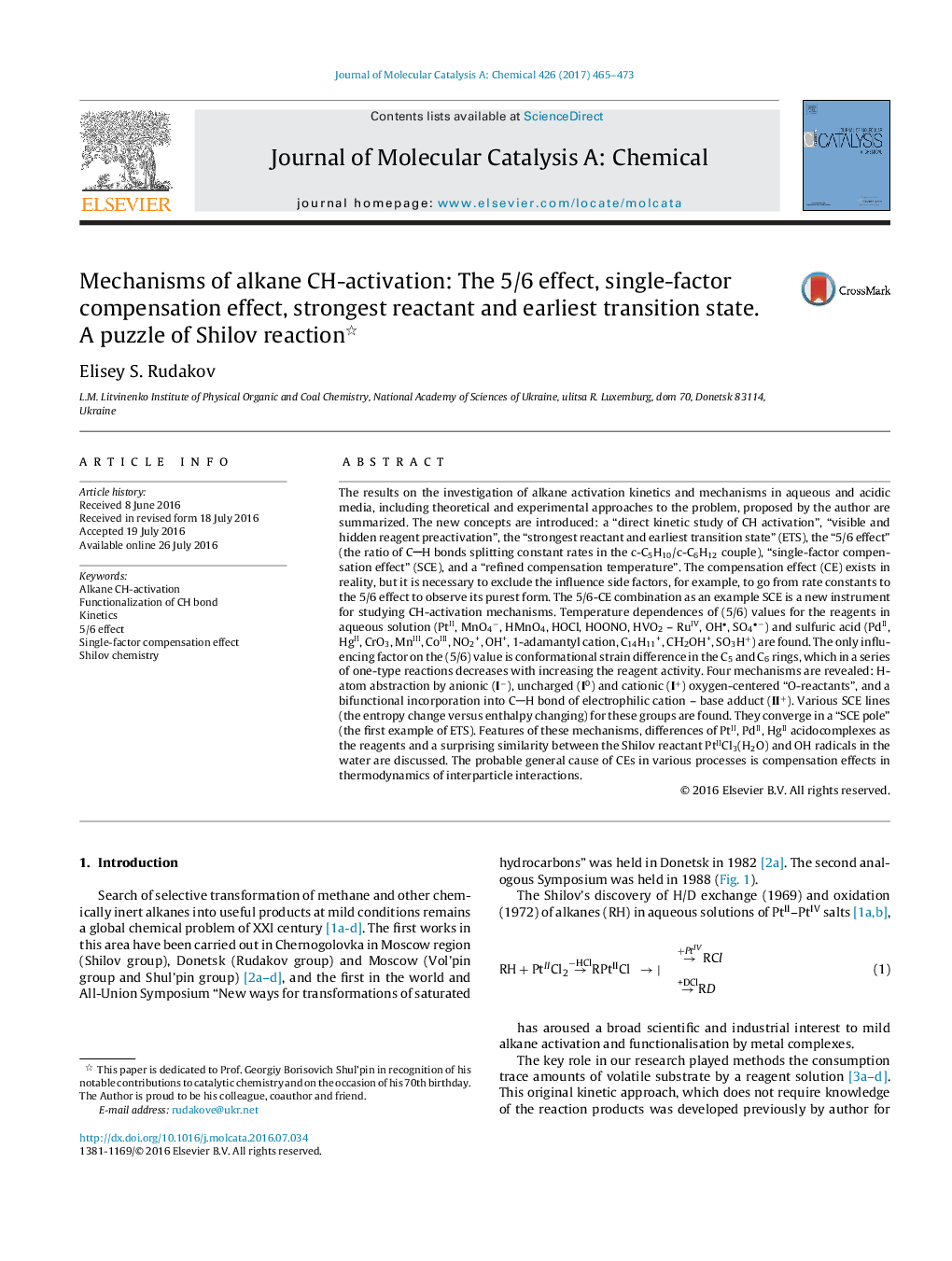| کد مقاله | کد نشریه | سال انتشار | مقاله انگلیسی | نسخه تمام متن |
|---|---|---|---|---|
| 6456459 | 1419919 | 2017 | 9 صفحه PDF | دانلود رایگان |

- Direct kinetic study of alkane activation and the 5/6 effect allowed to establish mechanisms of CH bonds cleavage.
- Reactions with metal complexes and other reactants were investigated.
- A theory of the compensation effects was developed.
- Acido complexes of HgII, PdII and PtII in the alkane activation do not differ from other reactants.
The results on the investigation of alkane activation kinetics and mechanisms in aqueous and acidic media, including theoretical and experimental approaches to the problem, proposed by the author are summarized. The new concepts are introduced: a “direct kinetic study of CH activation”, “visible and hidden reagent preactivation”, the “strongest reactant and earliest transition state” (ETS), the “5/6 effect” (the ratio of CH bonds splitting constant rates in the Ñ-C5H10/Ñ-C6H12 couple), “single-factor compensation effect” (SCE), and a “refined compensation temperature”. The compensation effect (CE) exists in reality, but it is necessary to exclude the influence side factors, for example, to go from rate constants to the 5/6 effect to observe its purest form. The 5/6-CE combination as an example SCE is a new instrument for studying CH-activation mechanisms. Temperature dependences of (5/6) values for the reagents in aqueous solution (PtII, MnO4â, HMnO4, HOCl, HOONO, HVO2 - RuIV, OH, SO4â) and sulfuric acid (PdII, HgII, CrO3, MnIII, CoIII, NO2+, OH+, 1-adamantyl cation, C14H11+, СÐ2OH+, SO3H+) are found. The only influencing factor on the (5/6) value is conformational strain difference in the C5 and C6 rings, which in a series of one-type reactions decreases with increasing the reagent activity. Four mechanisms are revealed: H-atom abstraction by anionic (Iâ), uncharged (I0) and cationic (I+) oxygen-centered “O-reactants”, and a bifunctional incorporation into CH bond of electrophilic cation - base adduct (II+). Various SCE lines (the entropy change versus enthalpy changing) for these groups are found. They converge in a “SCE pole” (the first example of ETS). Features of these mechanisms, differences of PtII, PdII, HgII acidocomplexes as the reagents and a surprising similarity between the Shilov reactant PtIICl3(H2O) and OH radicals in the water are discussed. The probable general cause of CEs in various processes is compensation effects in thermodynamics of interparticle interactions.
122
Journal: Journal of Molecular Catalysis A: Chemical - Volume 426, Part B, January 2017, Pages 465-473